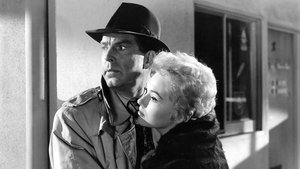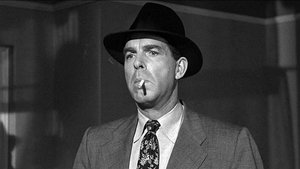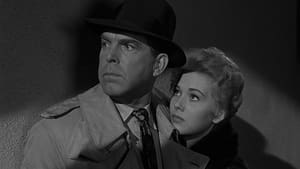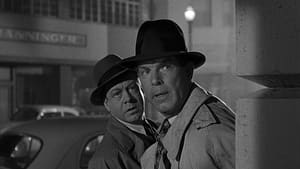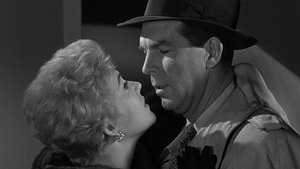Contact: [email protected]
Video Sources 0 Views

Synopsis
[ez-toc]




Introduction
Pushover Colorized 1954, a cinematic relic from the golden age, undergoes a captivating metamorphosis with the infusion of color, revitalizing the classic noir narrative. In an era dominated by the vibrancy of modern cinema, the decision to reintroduce this old masterpiece in a colorful palette provides a fresh perspective on its timeless tale. This article delves into the significance of colorizing old movies, explores the film’s noir roots, and details the meticulous craftsmanship behind its chromatic transformation.
The allure of Pushover Colorized 1954 lies not only in its noir pedigree but also in the groundbreaking decision to bring it to life in full color. As we embark on this cinematic journey, we unravel the layers of the film’s narrative, the magic of colorization, and its place among other noir classics.
Read Media File Transfer Agreement: Terms and Conditions
Read FAQ
The Charm of Film Noir Genre in Pushover Colorized 1954
To truly grasp the allure of Pushover Colorized 1954, one must first understand the mystique of film noir. Defined by its atmospheric cinematography, morally ambiguous characters, and compelling crime narratives, film noir captivated audiences in the mid-20th century. Pushover, originally a noir triumph, now emerges from the shadows with a chromatic flourish, allowing viewers to experience the genre in an entirely new light. The film’s narrative, deeply entrenched in the noir cycle, adds a layer of complexity and intrigue to its storyline.
Film noir, often associated with black-and-white aesthetics, finds itself reborn in vivid color. The decision to colorize a classic like Pushover raises questions about the preservation of cinematic authenticity versus the allure of modernization. How does this chromatic transformation impact the viewing experience, and does it enhance or dilute the essence of film noir?
Bringing Old Movies to Life: The Art of Colorization
Colorization, often met with skepticism, takes center stage in Pushover’s rebirth. The importance of this process lies in its ability to breathe new life into old films, making them more accessible to contemporary audiences. Pushover Colorized 1954 undergoes a meticulous colorization process, blending technological advancements with artistic interpretation.
The impact of witnessing a once-monochromatic classic in full color cannot be overstated. It provides a fresh perspective on the film’s visual narrative and emotional depth. The transformation opens a dialogue on the intersection of technology and cinematic tradition. Does colorization alter the intended atmosphere of the film, or does it offer a new lens through which to appreciate the narrative and characters?
The Making of Pushover Colorized 1954
Richard Quine, the visionary director behind Pushover Colorized 1954, played a pivotal role in realizing the film’s colorized incarnation. Quine’s directorial prowess, coupled with a keen eye for detail, ensured that the color palette seamlessly integrated with the film’s noir elements. The main actors, led by the talented Fred MacMurray as Paul Sheridan and the captivating Kim Novak as Lona McLane, inject vitality into their portrayals, enhancing the characters’ complexity.
Cinematography takes on a new dimension in the colorized version, with the visuals contributing to the overall mood and atmosphere. The interplay between light and shadow, a hallmark of noir cinematography, is reimagined in color, presenting a challenge and an opportunity for the filmmakers. How does the colorization impact the visual storytelling, and does it alter the original directorial intent?
A Closer Look at the Characters and Plot of Pushover Colorized 1954
Fred MacMurray’s portrayal of Paul Sheridan is a masterclass in the subtle nuances of a noir protagonist. His descent into the underworld, fueled by love and desire, mirrors the classic noir tropes. Kim Novak, as the enigmatic Lona McLane, captivates with her beguiling performance, adding layers to the femme fatale archetype. Dorothy Malone’s presence in a supporting role adds further depth to the film.
The plot, a labyrinth of deceit and betrayal, unfolds with meticulous pacing, creating suspense and intrigue in every scene. The colorization not only brings the characters to life but also adds layers to their personalities. How does the chromatic treatment influence the audience’s perception of the characters, and does it bring forth nuances not apparent in the original black-and-white version?
Pushover Colorized 1954 in Comparison to Other Film Noir Classics
In the grand tapestry of film noir, Pushover Colorized 1954 stands shoulder to shoulder with classics such as “Double Indemnity” and “Vertigo.” While sharing thematic elements with its noir counterparts, Pushover distinguishes itself through its unique narrative twists and vibrant visual style. The colorization adds a layer of modernity, allowing viewers to draw parallels between the timeless allure of noir and the evolving landscape of cinema.
Comparisons with other noir classics highlight the film’s thematic richness and the enduring power of noir storytelling. Does Pushover Colorized 1954 maintain its noir identity amidst the colors, or does it transcend the genre’s boundaries, creating a hybrid cinematic experience?
Reception and Legacy of Pushover Colorized 1954
Upon its colorized release, Pushover 1954 garnered both praise and skepticism. Some purists questioned the need to tamper with a classic, while others embraced the opportunity to see the film in a new light. Contemporary reviews praised the film for successfully bridging the gap between the old and the new, with colorization enhancing rather than overshadowing the original noir aesthetic.
Pushover Colorized 1954 has left an indelible mark, proving that innovation can coexist with cinematic nostalgia. The legacy of the film extends beyond its initial reception, as it continues to captivate audiences with its timeless narrative and innovative presentation. How has the film’s legacy evolved over time, and does the colorized version contribute to its lasting impact on cinematic history?
Conclusion
Pushover Colorized 1954, with its dynamic characters and spellbinding plot, continues to resonate in the hearts of cinephiles. The decision to colorize this old classic not only breathes new life into the film but also sparks a conversation about the delicate balance between preserving cinematic history and embracing technological advancements. As we bid adieu to Paul Sheridan and Lona McLane, the enduring appeal of Pushover Colorized 1954 serves as a testament to the timeless nature of storytelling, transcending the boundaries of both black-and-white and colorized cinema.
This revitalization of old movies opens the door to rediscovering the magic that made them unforgettable in the first place, reminding us that the beauty of cinema lies in its ability to evolve while preserving the essence of its cinematic roots. Pushover Colorized 1954 stands not only as a testament to the brilliance of noir storytelling but also as a symbol of the ever-changing landscape of cinema, where the past and present converge in a vibrant tapestry of storytelling excellence.
